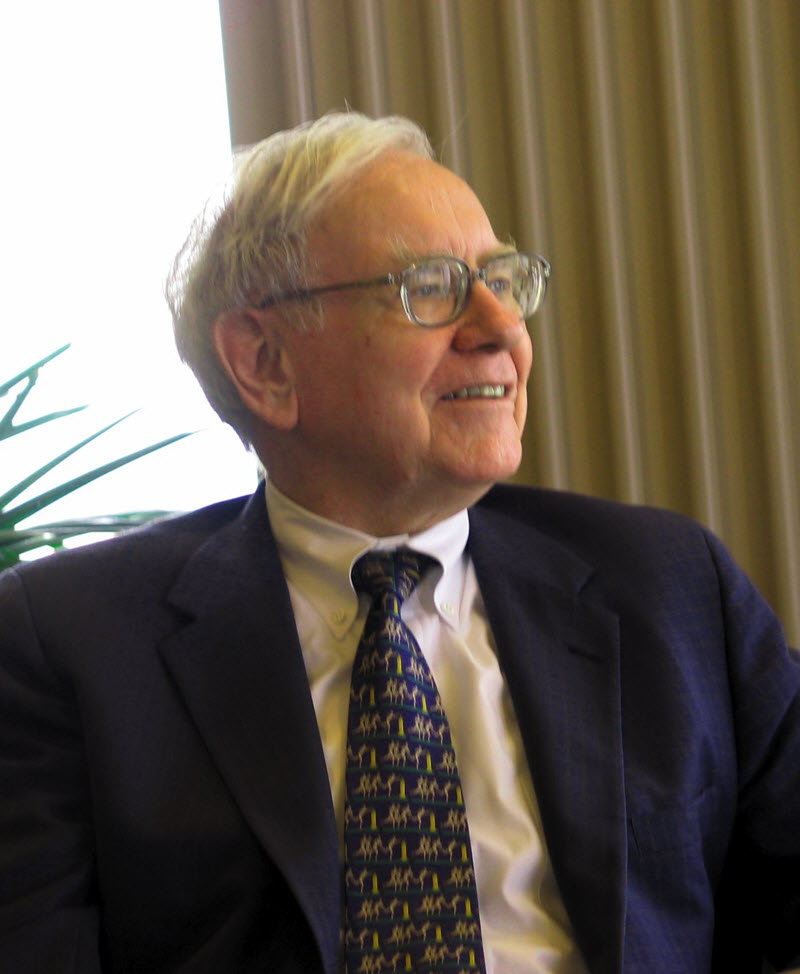Algorithmic Trading: Combines Market Noise Trading And Trend Trading
 Tali Soroker is a Financial Analyst at I Know First.
Tali Soroker is a Financial Analyst at I Know First.
Algorithmic Trading
Investors Vs Traders

Warren Buffet
Stock investors are the individuals or bodies that are more commonly associated with the stock market. Investors buy shares of stocks based on fundamental analysis and recognize themselves as partial owners of the companies whose stock they’ve purchased. Investors purchase stock to hold for a long period of time, and, therefore, analyze two aspects of the company: stock value and potential success. Obviously, when buying stock, as with any other service or product, it is important to be sure that it has a good value. Investors also look at other metrics of a company’s health to determine what level of financial stability the company has. Still, there are different ways to value the company; each places different emphasis on various aspects. It does not help that each company is unique, thus contributing to differences in valuations.
Stock traders have a much different approach. Traders rely more on information about the market as a whole. Traders aim to make money based off of a stock’s short-term price volatility. In other words, they are making short-term trades on stocks that are expected to have a notable change in share price in a short period of time. These trades can last anywhere from several seconds to several weeks. Rather than looking at company health metrics, traders examine aspects of the market like price patterns and market sentiment to determine which stocks will get them the best short-term returns.
Clearly, investors and traders have different approaches to making money in the stock market. Although members of each group may see different benefits and drawbacks with each practice, both traders and investors are necessary in order to form a fully functioning market. Investors rely on traders to create liquidity in the market which enables them to buy and sell shares. Conversely, traders rely on investors to create a basis from which they can buy and sell stocks. The current financial markets, as we know them today, are formed by the combination of these two groups.
Noise Traders
There is an abundance of information that can be found and analyzed concerning the stock market. The ways in which traders examine this information, what they deem to be important and how they use it to make decisions separates them into different classifications.

John Maynard Keynes by Unknown photographer, bromide print, 1933
Noise refers to the random data that is produced and occurs within the market. Movement in the market that is caused by program trading and dividend payments, among other events, is called noise because it is not strictly reflective of the overall market sentiment. Traders that rely on this kind of information, blindly following apparent trends or news stories, without doing any real fundamental analysis are called noise traders. Noise traders often follow trends, mimic informed traders and react strongly to good and bad news stories.
Noise traders can pose substantial risks to themselves and other investors in the market by making poor decisions or overreacting to some piece of news, either good or bad. As noise traders act on random information, these traders tend to buy and sell shares based on fear or greed and can cause the price of a stock to drop, or rise, without any fundamental justification.
While noise trading poses a risk to those making trades based on both noise and on fundamental data, the effects of noise trading on the market are not entirely negative. The high volume of buying and selling of stocks made by noise traders causes an increase in price volatility in the short term. Without this increase in volatility of stocks, it would be more difficult for any investor to make a noteworthy amount of money especially for certain trader types like day traders and swing traders. As the time horizon grows, the effects of noise trading get smaller, however, there are still some instances in which it can have longer lasting consequences. For example, when enough investors jump on the bandwagon of some trading trend or popular stock, it can create a market bubble and when the bubble bursts it can drag the market down for a longer period of time.
In this particular instance, when noise traders are causing the formation of a bubble, other types of traders can detect the trend using market analysis and join even if they think the stock is overvalued. They need only the foresight of the trend change, and the discipline to jump off in time, in order to turn a profit.
Trend Traders
 Trend trading, just as it sounds, is trading based on a stock’s momentum in one direction, either increasing or decreasing. However, this strategy is more involved than simply observing which direction a stock’s share price is moving over a particular time horizon. Trend traders use fundamental data and different indicators to determine whether a trend will continue or not. This form of trading relies on statistics and data analysis to determine when to buy and sell stocks, rather than paying attention to news stories or listening to rumors and analyst tips.
Trend trading, just as it sounds, is trading based on a stock’s momentum in one direction, either increasing or decreasing. However, this strategy is more involved than simply observing which direction a stock’s share price is moving over a particular time horizon. Trend traders use fundamental data and different indicators to determine whether a trend will continue or not. This form of trading relies on statistics and data analysis to determine when to buy and sell stocks, rather than paying attention to news stories or listening to rumors and analyst tips.
Traders use technical indicators to predict future share prices. These indicators are metrics of the asset that come from the overall stock price activity, rather than from the actual fundamentals of the company. Some common indicators that analysts and traders are following are Moving Averages, Relative Strength Index (RSI), and On Balance Volume (OBV). Each indicator can be used in a multitude of ways to determine buy and sell signals.
Despite the statistical support that trend traders have for the trades that they make, there is still uncertainty and risk in making these trades. Additionally, traders want to buy and sell stocks based on the strength of trends and it may be necessary for them to look through hundreds or thousands of stocks in order to find the best opportunities that are out there. Still, most investors and market analysts agree on the fact that “the trend is your friend” whether or not they agree on the best strategies for finding the strongest trends.
Algorithmic Trading
Algorithms are complex mathematical formulas that are designed to follow a set of instructions to carry out a certain process in order to solve a problem. People are now using computer programs to do stock trading with the help of algorithms. The formulas are designed so that the algorithm is automatically monitoring market behavior, and in many cases can automatically buy and sell stocks at the best price without human emotion or error ever becoming a factor. The unique algorithm that I Know First has developed is a genetic algorithm that takes in 15 years’ worth of historical data and can then forecast what the market will do in the future. In this particular instance, algorithmic trading not only builds off of trend trading but quantitatively separates the trend from the noise and uses the noise to the traders’ advantage. The news-driven noise and the interaction between different kinds of investors and traders create waves of short and long duration. The I Know First algorithms find the opportunities for trading between such waves.
Conclusion
Human beings are uniquely flawed individuals. Each person approached the stock market differently, with a different perspective and a different level of commitment. Differences appear in the length and size of trades that an individual is making and how he is determining which stocks are a good bet to bring a positive return. Some rely on news stories and analyst tips and rumors while others make use of fundamental analysis in a variety of ways. Today, trading algorithms are able to take in inordinate amounts of data, separate the noise from the trend, and use both types of information to predict future stock trends. Algorithmic trading effectively combines noise trading and trend trading, while also eliminating human emotion and error from the equation.













